Hiking in Patagonia - Chile and Argentina
February 2-18, 2013
Part Two - Argentina
Page One - Heading to El Calafate, Argentina
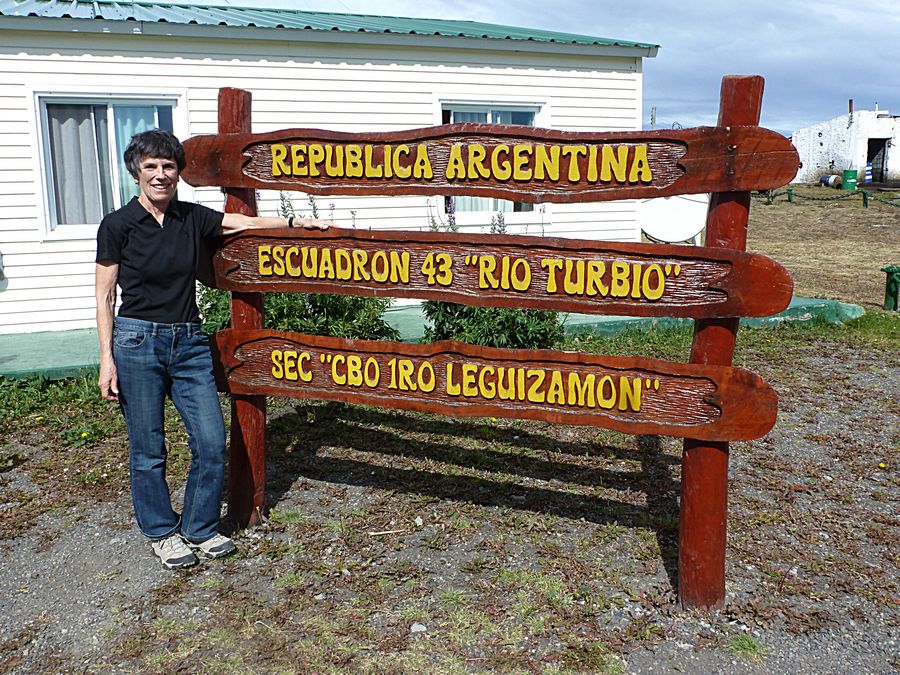
Pat at Argentina Border. We left Chile and drove across the border into Argentina, proceeding over the steppes
to the town of El Calafate, which is a gateway to Los Glaciares National Park. While we had been warned more
than once that it could take hours to have our documents checked, there was a short line, and it only took a few
seconds to look at my documents in the small building behind this sign. Our tour leader did rush us away from a rest
stop in order to beat a large tour group to the border station.
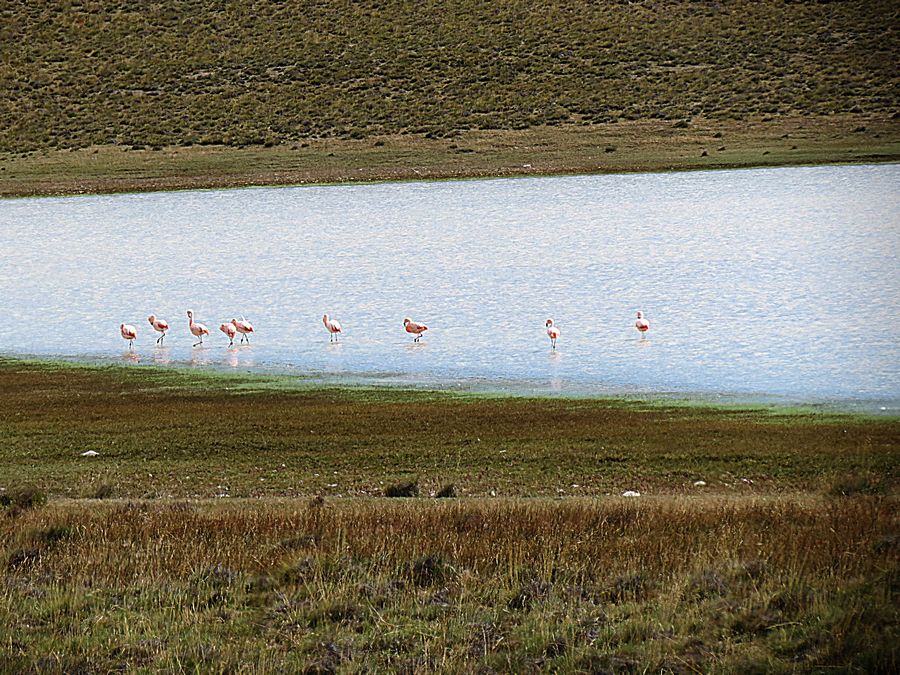
Flamingos in the distance from the road to El Calafate - Flamenco Austral or Chilean Flamingo
It breeds in temperate S. America from Ecuador and Peru to Chile and Argentina and east to Brazil.
There is also a small population in Utah and California. Like all flamingos, it lays a single chalky white egg
on a mud mound.
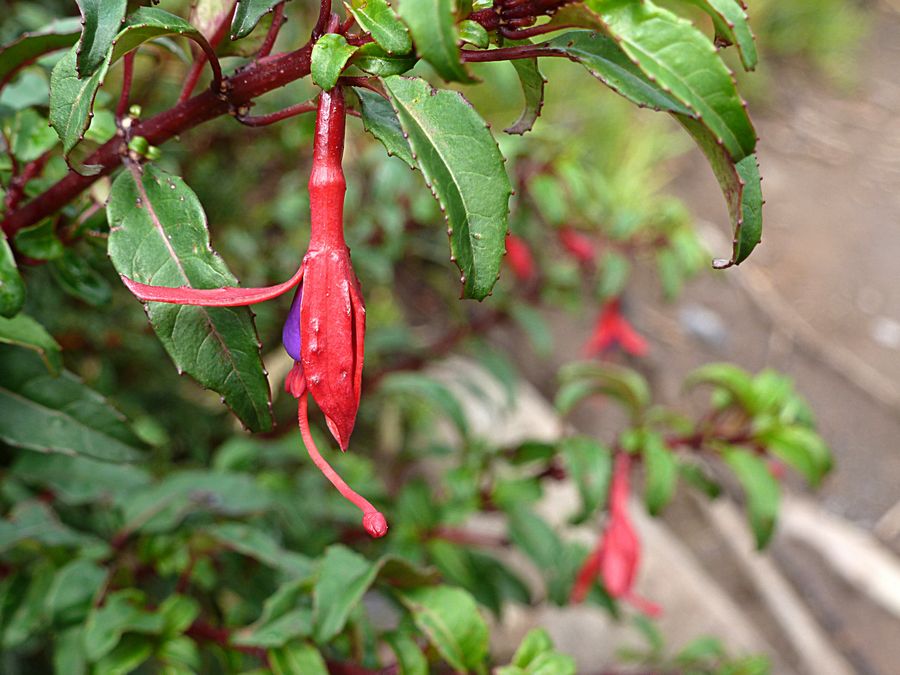
Fuchsia ( Fuchsia Magellanica)
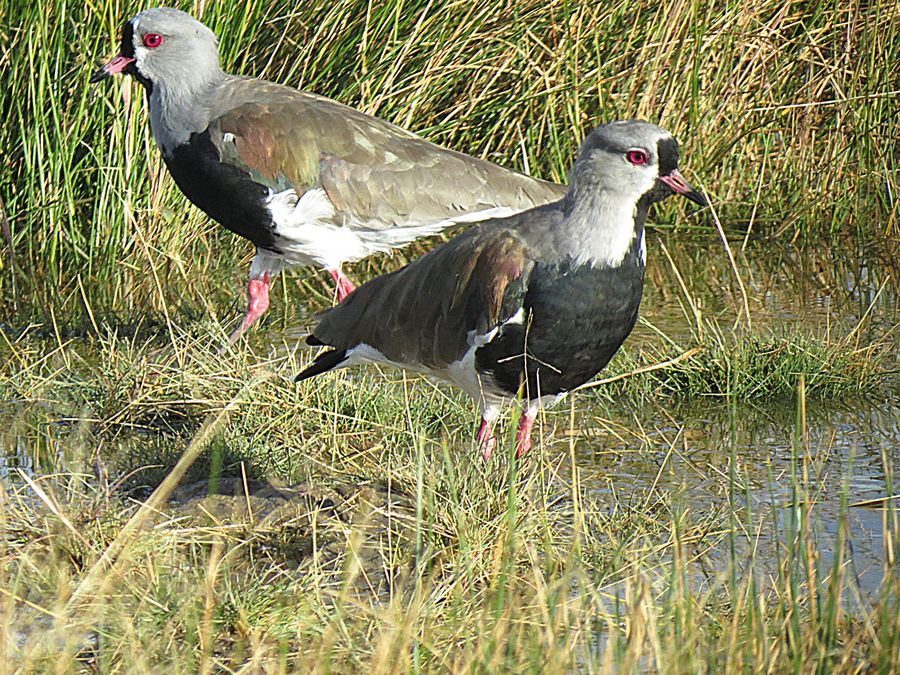
Before the group headed to the Perito Moreno Glacier, Jeff and I walked from the hotel in El Calafate to
the Lago Argentino shoreline. The general consensus is that these birds are Southern Lapwings.
It is found around lake and river banks or open grassland.
Its food is mainly insects and other small invertebrates.
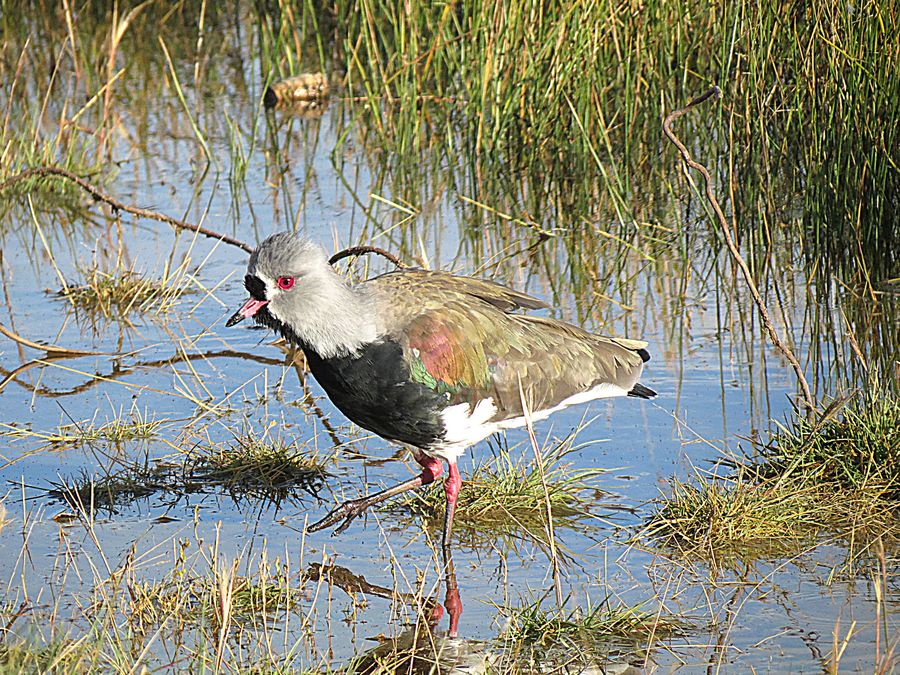
Another photo of the same bird
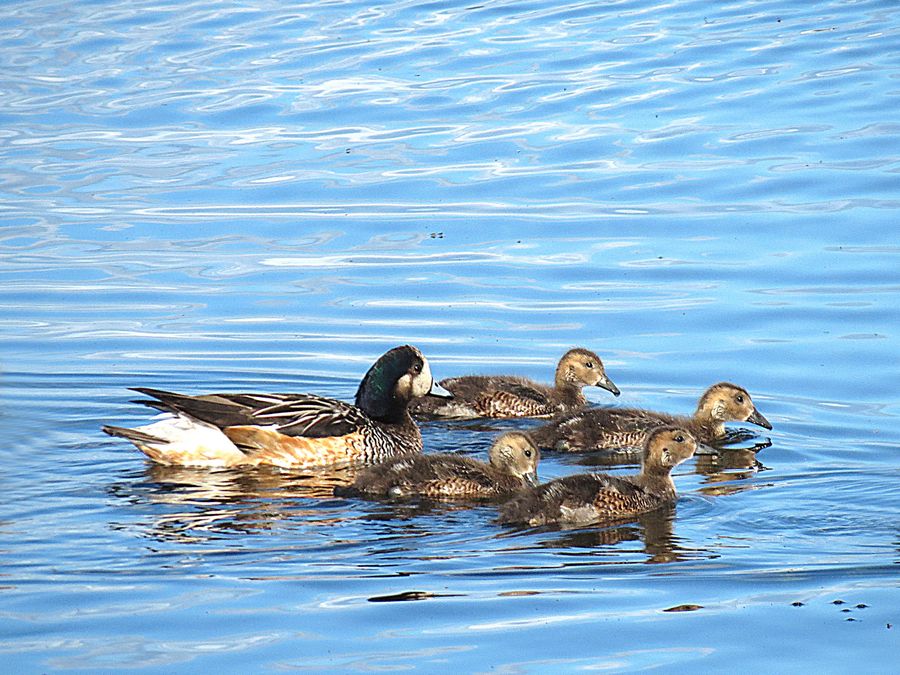
Chiloe Wigeon - This bird has an iridescent green-blue cap on its head, and a bluish gray bill
with a black tip. The cheeks and forehead are white, the eyes are dark brown. The neck is black.
The Chiloe wigeon is a highly social duck that communicates by lifting its chin and whistling. It feeds
mainly on land using its short bill to graze, but will also dab in the water for aquatic plants and invertebrates.
It nests in tall grasses, and both parents help raise the young.
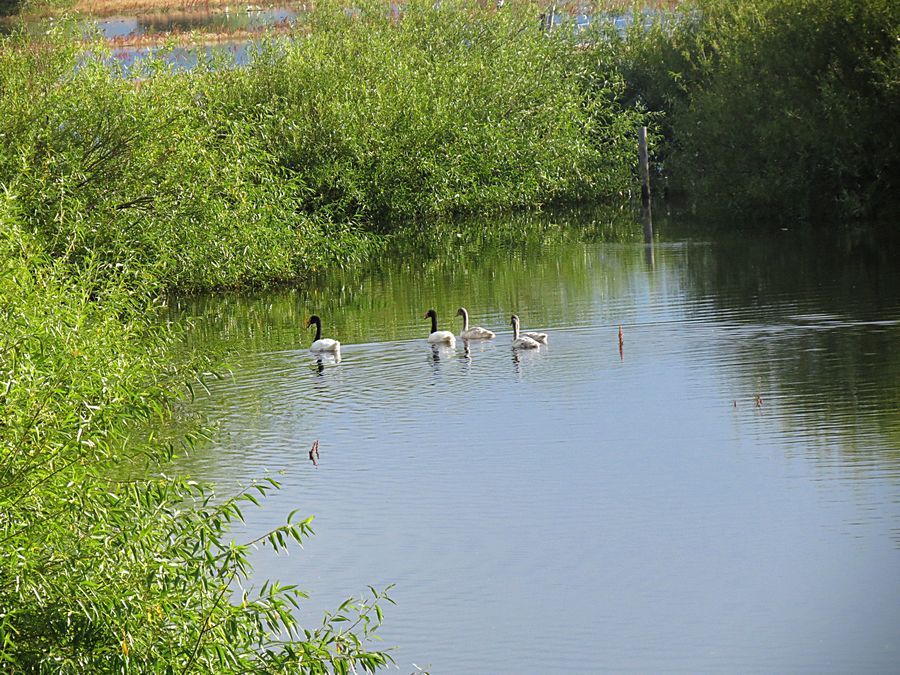
Cisne Cuello Negro - Black-necked Swan
The Black-necked Swan is the largest waterfowl native to South America.
It is found in freshwater marshes, lagoons, and lake shores in southern S. America.
It breeds in Patagonia, Tierra del Fuego, and the Falkland Islands.
In the winter, it migrates to Paraguay and southern Brazil.
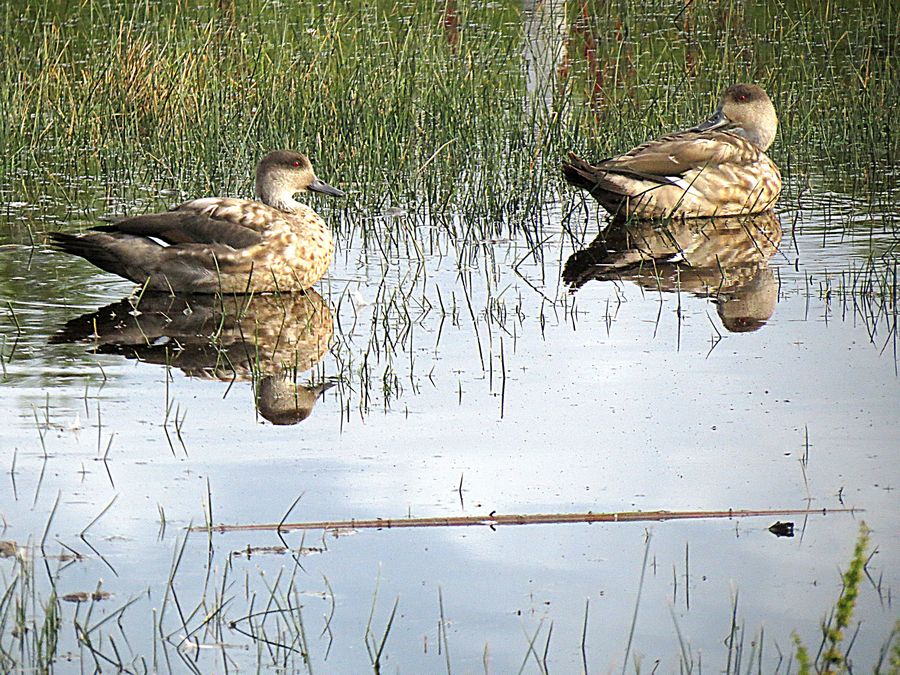
Patagonian Crested Duck - It feeds on algae and invertebrate.
It prefers shallow coastal regions.
It nests in tall grass near water and lays 5 to 7 eggs.
Link to Page Two - Perito Moreno Glacier
Pat's Home Page